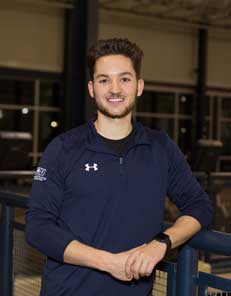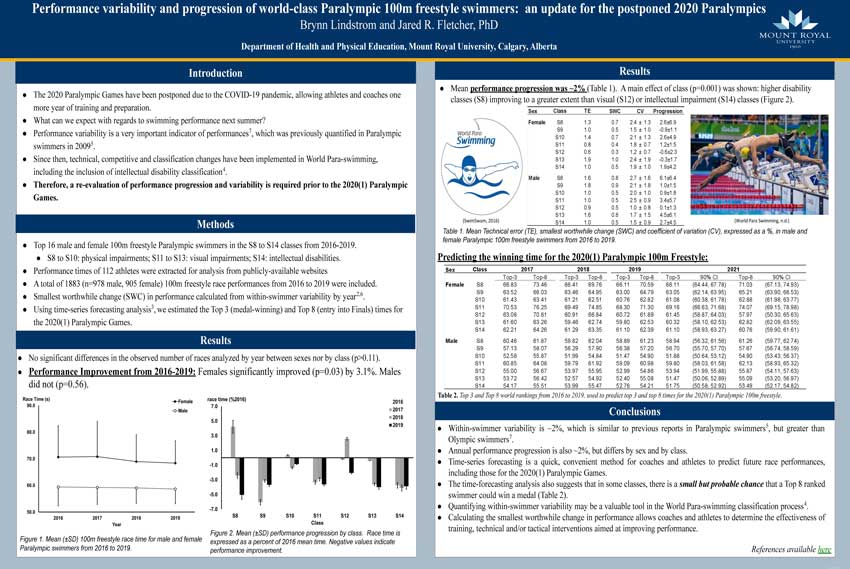
Brynn Lindstrom, B.HPED, DipPFT, CSEP-CPT, CSEP-HPS, FMS
Since I have graduated, I have continued on in my research endeavours with Dr. Jared Fletcher and with Dr. Jill Parnell. Dr. Fletcher and I are currently working on finishing our manuscript for our highlighted research so we can submit it for a peer-reviewed publication. Dr. Parnell and I are in the midst of collecting our data for our research titled: ‘Effects Of Protein Pre-run On Glucose And Perceived Exertion — A Pilot Study’. With the restrictions that came with COVID-19, our lab testing came to a halt, so we are currently waiting on ethics approval to give us the green light to continue our testing. In the meantime, I have been improving my certifications by obtaining my High Performance Specialist certification with CSEP and now I am working towards my Certified Exercise Physiologist certification with CSEP. I am also working towards doing a master’s degree in Kinesiology at the University of Calgary next spring/fall. I just finished writing up a grant application with the Natural Sciences and Engineering Research Council (NSERC) and am looking forward to hearing back from them and seeing what the future holds.
CSEP Poster 2020
Performance variability and progression of world-class Paralympic 100m freestyle swimmers: an update for the postponed 2020 Paralympics
B.E.A. Lindstrom1 and J.R. Fletcher, PhD1
1Department of Health and Physical Education, Mount Royal University, Calgary, AB T3E 6K6, Canada.
Estimates of performance variability and progression can be useful for researchers and practitioners interested in predicting athletic success prior to a competition. Due to the coronavirus pandemic of 2019/2020, the Paralympic swimming competition has been postponed until 2021. This offers a unique opportunity to evaluate the performance variability and progression of elite Paralympic swimmers prior to these Games. The top 16 male and female 100m freestyle Paralympic swimmers in the S8 to S14 classes at the end of the 2019 calendar year were chosen for data extraction from publicly-available websites and further analysis. Subsequent analysis included all 100m freestyle performances from 2016 to 2019 in order to calculate the performance progression and variability of male and female 100m freestyle Paralympic swimmers from 2016 to 2019. In total, performance times of 112 athletes from the S8 to S14 classes were extracted for analysis. Two-way ANOVA revealed a significant sex x year interaction (p=0.01); mean race time from 2016 to 2019 was reduced in females (70.6±11.8 s in 2016 to 68.4±8.4 s in 2019, p=0.026), but was not reduced in males (59.4±7.1 s in 2016 to 58.7±5.5 s in 2019, p=0.558). The TE across all sexes and swimmers was 1.3%. The TE of the S8 class was significantly higher than both the S12 (p=0.001) and S14 (p=0.033) classes. The annual progression in performance across all classes and sexes was 1.7±1.3% and a significant main effect of class was found (p=0.001); progression of the S8 class being greater than either the S12 or S14 classes. Only the female S9, S12 and S13 classes showed a negative average annual progression from 2016 to 2019. Our analyses allow us to calculate the performance variability and progression during the latest swimming quadrennial, which is useful in predicting medal-winning times for the 100m freestyle for subsequent competitions.


